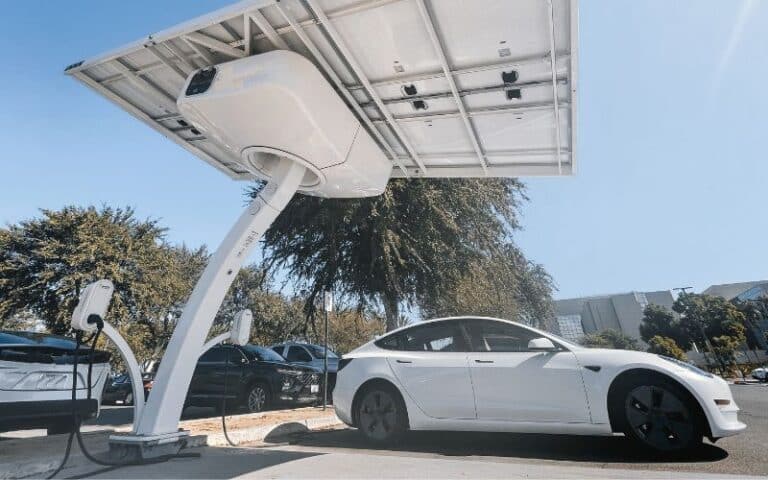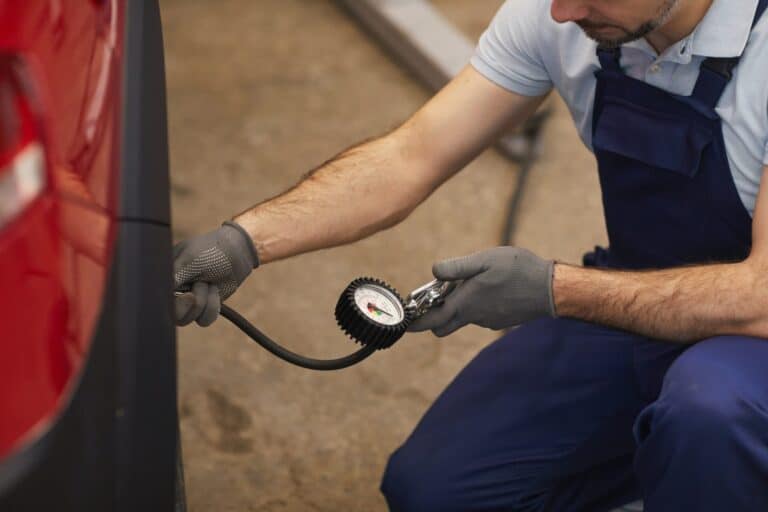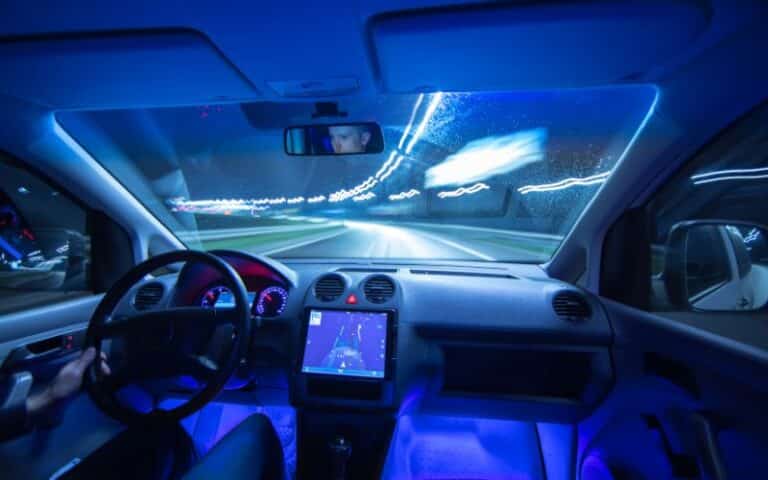Tesla Front Passenger Safety Restraint System Fault!
Tesla has been at the forefront of innovation in the automotive industry and has captured the attention of both consumers and investors.
But even with all the bells and whistles, Tesla is still a vehicle that must meet basic safety standards.
Unfortunately, few Tesla owners have reported a “Front Passenger Safety Restraint System Fault” in their vehicles.
What exactly does this fault entail, and what can Tesla owners do?
The Front Passenger Safety Restraint System Fault in Tesla vehicles is a potentially serious issue that several factors can cause. The system may not function if there are loose or broken connections, misaligned or disconnected seat belt sensors, or faulty assembly. If, after troubleshooting, the issue persists, visit Tesla customer support for further assistance.
In this read, you’ll learn about the specifics of the issue and the potential consequences of a Tesla faulty restraint system.
Also, you’ll be able to identify and understand the troubleshooting steps to address the problem.
What Does the Passenger Safety Restraint System Fault Error Mean in Tesla?

The “Front Passenger Safety Restraint System Fault” message on your Tesla’s screen means the vehicle’s safety restraint system is malfunctioning.
The safety restraint system includes the front passenger seatbelt and airbag, and this error indicates that one or both of these components are not working properly.
Your Tesla model can display this error message in various forms depending on the model.
So, it’s important to be familiar with the error message on your specific model.
It’s also important to know that this error message should be taken seriously and addressed promptly.
What Causes the Front Passenger Safety Restraint System Fault in Tesla?
It’s worth noting that several factors can trigger the “Front Passenger Safety Restraint System Fault” error in Tesla vehicles, and the underlying cause may not be immediately obvious.
Knowing what might be causing the problem can help you identify and address the issue more quickly and effectively.
With that in mind, here are some of the most common causes:
#1. Loose or Broken Connections
Loose or broken connections are among the more common causes of the “Front Passenger Safety Restraint System Fault” error in Tesla vehicles.
Over time, the connector that connects the seat sensor to the vehicle’s electrical system can become loose, causing the sensor to malfunction and trigger an error message.
By checking and ensuring that the connector is firmly snapped closed, you can fix the problem and clear the error message.
#2. Misaligned or Disconnected Seat Belt Sensor
The seat sensor detects whether the seatbelt is in use.
If the sensor is not properly aligned or has become disconnected, the vehicle may be unable to detect whether the seatbelt is in use, triggering the error message.
Making small adjustments to the seat can resolve this issue, which can sometimes reposition the sensor correctly.
#3. Faulty Assembly
If the other potential causes of the “Front Passenger Safety Restraint System Fault” error are not the issue, there may be a more serious problem with the seat’s wiring or assembly.
In this case, replacing the entire seat assembly may be necessary.
However, if the issue is related to a manufacturing defect, the warranty may cover the repair, so it’s important to note that.
Some Tesla service centers will also repair or replace faulty parts for free, even if the warranty has expired.
It’s always best to consult your local Tesla service center to see if the warranty covers the repair costs.
How to Troubleshoot Passenger Safety Restraint System Fault?
The “Front Passenger Safety Restraint System Fault” error in Tesla vehicles can be worrying, but you can take some simple steps to troubleshoot the issue.
Here’s a quick overview of the steps to troubleshoot the Front Passenger Safety Restraint System Fault in Tesla:
#1. Check for Loose or Broken Connections
One possible cause of the “Front Passenger Safety Restraint System Fault” error in Tesla vehicles is a broken connection between the seat sensor and the vehicle’s computer system.
One way to troubleshoot this issue is to visually inspect and securely fasten the connectors for any signs of damage.
#2. Inspect the Seatbelt Sensor
First, try adjusting the seat’s position and using the seat heater to troubleshoot this issue.
If the problem persists, you may need to replace the seatbelt sensor.
#3. Reconnect the Battery
Sometimes, you can resolve the “Front Passenger Safety Restraint System Fault” error message by disconnecting and reconnecting the car’s battery.
Reconnecting the battery can reset the system and clear any temporary glitches that may have been the cause of the error.
#4. Check for Faulty Assembly
Sometimes, the wiring or other seat components may be defective, leading to an error message.
In these situations, replacing the entire seat assembly may be necessary to resolve the issue.
It’s worth noting that troubleshooting this error message requires some mechanical knowledge and may require assistance from a professional.
#5. Inspect for Damages
When trying to diagnose the “Front Passenger Safety Restraint System Fault” error message, one of the first things to do is inspect the car for signs of damage that might affect the airbag system.
Check the seats for any rips or tears in the upholstery and any signs of impact damage to the seats themselves.
Also, inspect the dashboard and steering wheel for any cracks or other signs of damage. If you find any damage, it’s best to repair it with a qualified technician.
#6. Restart Your Car
Restarting your Tesla can sometimes resolve the “Front Passenger Safety Restraint System Fault” error.
Restarting Your Tesla may clear any temporary glitches or software errors causing the error message.
To restart the car,
- First, park in a safe location.
- Then, turn off the engine and open the door to exit the vehicle.
- Once you’ve exited, wait a few minutes, re-enter the car, close the door, and start the engine.
After restarting the car, the error message should clear.
However, after troubleshooting Tesla’s Front Passenger Safety Restraint System Fault, the screen may display the error resolution status.
The error resolution may differ with different meanings. The table below shows the error status and its descriptions.
| Error Status | Description |
|---|---|
| Resolved | The error is no longer an issue. |
| Unresolved | The issue may remain unresolved or undetermined. |
| In Progress | The troubleshooting and repair process is ongoing. |
| Pending Software Update | The resolution depends on whether a software update is available for your vehicle. |
| Needs Professional Help | The issue requires assistance from a Tesla service center. |
Nonetheless, if the recommended solutions do not make the error disappear, it is best to take the car into service.
If it persists, you may need to call Tesla Customer Service or Visit any Tesla Service Center for further action to resolve the issue.
What Parts Make Up the Passenger Safety Restraint System in Tesla
The Passenger Safety Restraint System (PSRS) in Tesla vehicles consists of several interconnected components that work to provide occupants with a safe and secure experience.
Here are the several key parts that make up the Passenger Safety Restraint System in Tesla vehicles:
#1. Occupant Classification System
The Occupant Classification System (OCS) in Tesla vehicles is a key Passenger Safety Restraint System component.
The OCS uses sensors to detect whether a passenger is sitting in the front seat and measure the passenger’s weight.
Based on this information, the system can determine the level of protection needed during a crash.
The OCS is essential for ensuring the airbags are activated properly during a crash.
It also helps to prevent accidental airbag deployment when a child or pet is in the front seat.
#2. Seat Belt Sensor
The seatbelt sensor is a small device located near the seatbelt buckle.
It monitors whether the seatbelt is buckled and sends a signal to the Restraint Control Module responsible for activating the airbags.
However, if the seat belt unbuckles, the sensor detects it and signals the Restraint Control Module not to deploy the airbags.
It is an important safety feature, as it prevents accidental airbag deployment when the seat is empty or occupied by a child or pet.
If the seatbelt sensor is not working properly, it can lead to inaccurate readings and potentially dangerous situations.
#3. Restraint Control Module
The Restraint Control Module (RCM) is a computerized module that receives signals from various sensors and then determines the proper deployment of the airbags.
The RCM receives data from the Occupant Classification System (OCS) and the seat position sensor, among other sensors.
The OCS tells the RCM how many occupants are in the front seats and their size.
Meanwhile, the seat position sensor tells the RCM whether the seat is in the correct position for the airbags to deploy.
Using this information, the RCM can determine whether to deploy the airbags and, if so, at what level of force.
#4. Airbags
Airbags are a critical safety feature in Tesla vehicles, and if they fail to deploy properly, it can lead to serious injury in a crash.
The Front Passenger Safety Restraint System Fault error message may indicate that one or more of the components in the airbag system are not working properly.
It’s important to have the vehicle checked by a qualified technician as soon as possible to ensure the airbags are working properly.
FAQs
Can I Still Drive My Tesla if I Get the “Front Passenger Safety Restraint System Fault” Error?
It is strongly discouraged to drive a Tesla when the “Front passenger safety restraint system fault” error message is displayed.
Are There Any Recalls Related to Tesla’s Passenger Safety Restraint System
Yes, Tesla has issued several recalls in the past related to its passenger safety restraint system.
How Much Does it Cost to Fix the “Front Passenger Safety Restraint System Fault” Error in Tesla
The cost to fix the “Front passenger safety restraint system fault” error in Tesla vehicles can vary depending on the issue’s specific cause and model.






